If you’ve ever given a presentation using a projector, you know the importance of having a wrinkle-free screen. A wrinkled projector screen can be very distracting, and can ruin your entire presentation. In this article, we will provide tips on how to remove wrinkles from your projector screen quickly and easily. We’ll also answer some common questions about projector screens and wrinkles. So, if you’re looking for ways to get rid of those pesky wrinkles, keep reading!
How does this happen?
Projector screens are usually made of cloth or vinyl. Over time, these materials can develop wrinkles from being stored in a rolled-up position. When you unroll the screen, the wrinkles will still be there. However, there are some things you can do to get rid of them.[3]
Applying Minimal Heat to Remove Projection Screen Wrinkles
Iron the Backside of the Projection Screen
If you find yourself in a pinch and need to remove wrinkles from your projection screen quickly, applying a small amount of heat can help. Using an iron on the backside of the projection screen, set it to a low or delicate setting and lightly press the fabric. Remember to keep the iron moving so that you don’t scorch or damage the material.[1]
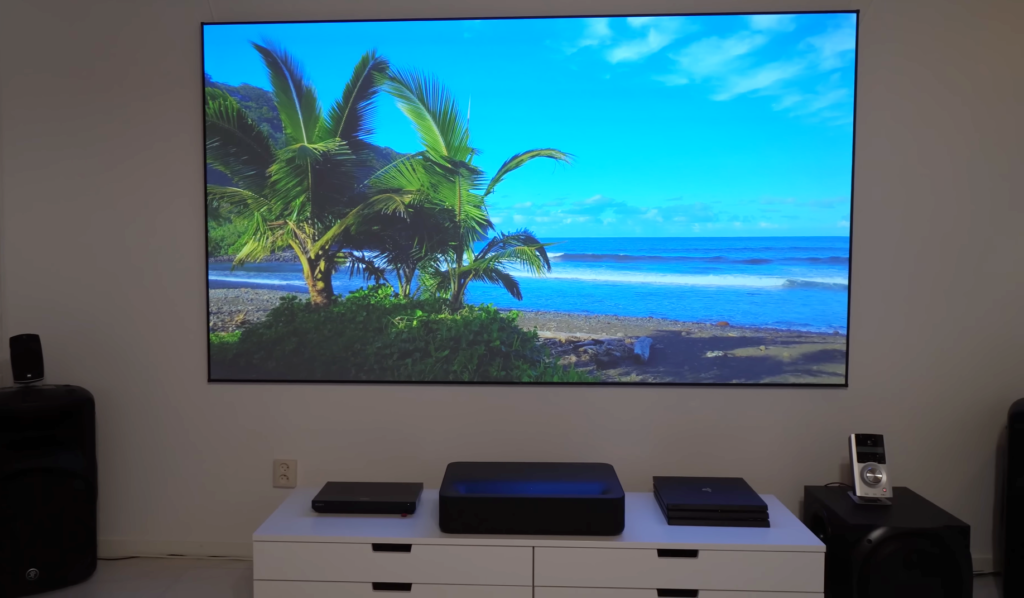
Blow Dry the Backside of the Projection Screen
The first step is to remove any dirt or debris that might be on the backside of the projection screen.
Once the backside of the projection screen is clean, set your blow dryer to the lowest heat setting and hold it about six inches away from the screen. Slowly move the blow dryer across the screen in a sweeping motion until all of the wrinkles are gone. Be sure to hold the blow dryer at a consistent distance and speed to avoid damaging the projection screen.[1]
Place the Projection Screen in Direct Sunlight
The heat from the sun will help to relax the fibers in the screen material and make wrinkles less visible. If you can, set up your screen in a spot where it will be hit by direct sunlight for at least an hour. If you don’t have an outdoor space that gets direct sunlight, you can also try using a hairdryer on the low or cool setting. Hold the hairdryer about 12 inches away from the screen and move it back and forth until all of the wrinkles are gone.[1]
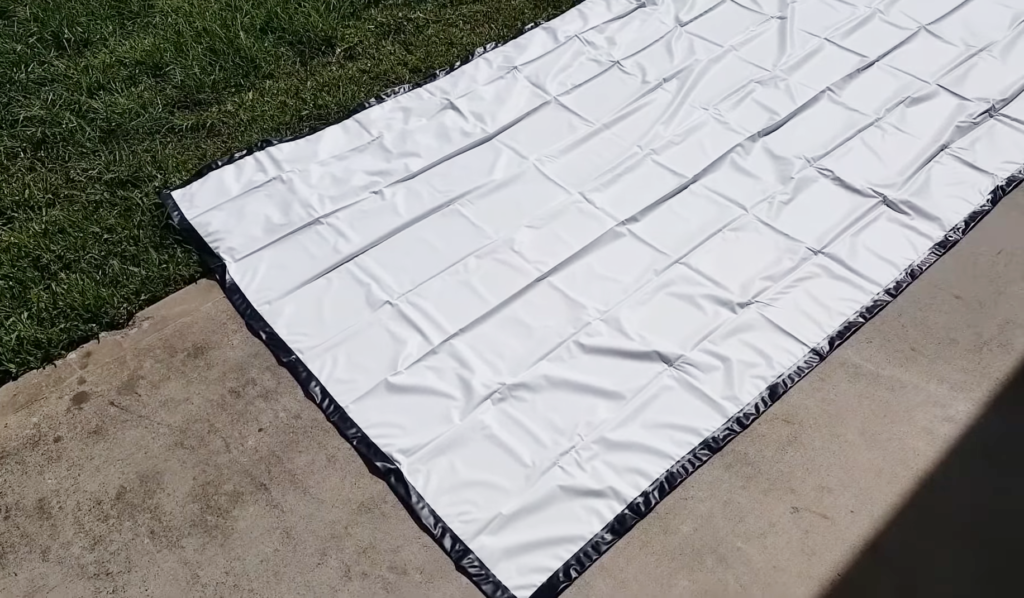
Turn Up the Central Heat in Your Home Theater, and Apply Tension to the Projection Screen
If you have a central heating system in your home theater, now is the time to use it.
Next, you’ll need to apply tension to the projection screen. You can do this by gently pulling on each side of the screen until it’s tight.
Once you’ve applied tension to the projection screen, turn off the central heat and allow the screen to cool down. The wrinkles should be gone by the time it’s cooled down completely. If they’re not, you can repeat this process until they are.[1]
Apply weight/pressure to the bottom of a hanging projector screen
You can use your hands to apply pressure to the bottom of the screen while it is hanging. You can also use something like a stack of books or a heavy object to apply pressure evenly across the bottom of the screen. Doing this will help to remove wrinkles from the fabric.
If you have a tab-tensioned projector screen, you can use the tensioning system to apply pressure to the bottom of the screen. This will help to remove wrinkles from the fabric.
Tab-tensioned screens are designed so that you can adjust the amount of tension on the fabric. This allows you to remove wrinkles from the fabric without damaging it.[2]
How can you remove wrinkles from an inflatable screen?
There are a few ways that you can remove wrinkles from your inflatable screen. The most common way is to use a hairdryer on the low setting. You can also use a steam iron on the delicate setting or hold a hot towel against the screen for a few minutes. If you have an air compressor, you can try using that as well. Just be sure not to overdo it, as too much pressure can damage the screen.
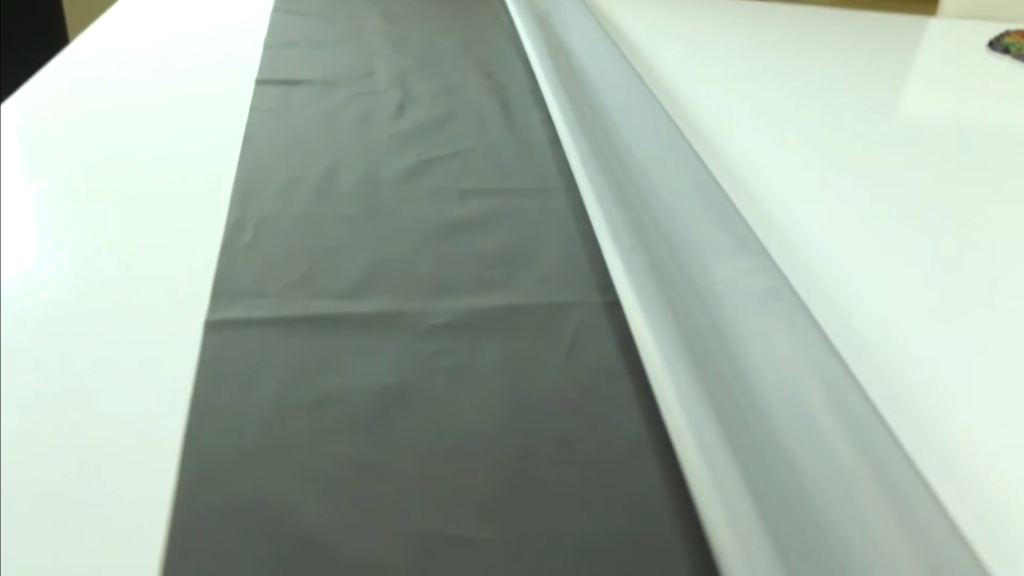
If you’re still having trouble getting rid of all the wrinkles, you can try hanging the screen up overnight in a warm room or outside in direct sunlight for a few hours. This should help loosen up the fabric and make it easier to get rid of the wrinkles.[2]
How to remove wrinkles from the anti-light projector screen?
First and foremost, it is essential to understand that there are different types of projector screens available in the market. These include fixed frame, tripod, electric motorized, and portable screen. Depending on the type of screen you have, the process of removing wrinkles will vary. For instance, if you have a fixed frame projector screen, then you will need to remove the fabric from the frame before starting the wrinkle removal process.
If your projector screen is made of vinyl or other similar materials, then you can use a hairdryer to remove wrinkles. Simply set the hairdryer on low heat and hold it close to the wrinkled area for a few minutes. The heat from the hairdryer will help to loosen the wrinkles. Once the wrinkles are loosened, you can use your hands to smooth them out.
If your projector screen is made of fabric, then you will need to use an iron to remove wrinkles. First, set the iron on low heat and make sure that there is no steam function enabled. Next, place a towel or cloth over the wrinkled area and then slowly run the hot iron over it. The heat from the iron will help to loosen the fibers of the fabric and remove the wrinkles.[2]
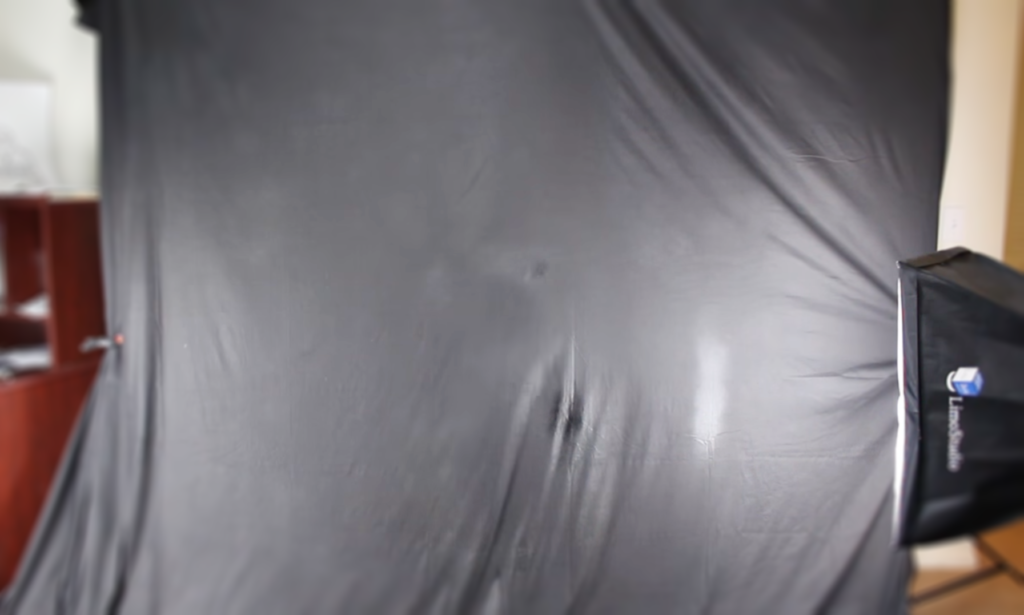
How to remove creases from the DIY screen?
If you’re wondering how to remove creases from the DIY screen, here are a few tips.
- Start by unrolling the screen completely and letting it sit for a day or two so that any wrinkles have time to relax.
- If there are still some stubborn wrinkles, try using a hairdryer on low heat to gently warm them up. This will help loosen the fibers and make it easier to smooth them out.
- You can also try using a steam iron on a low setting, holding it about six inches away from the fabric. Be careful not to touch the iron directly to the screen, as this could damage it.[2]
How to remove wrinkles from the pull-down projector screen?
There are several ways that you can remove wrinkles from your projector screen. The most common and effective way is to use a hairdryer. Another popular method is to use an iron on a low heat setting. If you don’t have either of these items, you can also try using a steamer or even hanging your screen up in a steamy bathroom.
Whichever method you choose, be sure to test it out on a small section of the screen first to make sure that it won’t damage the material. Once you’ve determined that it’s safe, start by working on one corner of the screen and slowly move across until all of the wrinkles are gone.[2]
How do you clean a fabric projector screen?
Assuming you’ve already removed the screen from the projector, there are a few ways you can clean your fabric screen. The most common and effective way is to use a lint roller. Lint rollers are inexpensive and can be found at most stores.
To use a lint roller, simply roll it over the surface of the screen in long, even strokes. Be sure to cover the entire surface of the screen. You may need to go over some areas multiple times to remove all the lint and debris.
Another option is to use a vacuum cleaner with a soft brush attachment. Gently vacuum the surface of the screen in long, even strokes. Be careful not to press too hard or you could damage the screen.[2]
Applying Tension to Get Wrinkles Out of a Projection Screen
Use a Tension Frame with your Projection Screen
If you have a tension frame projection screen, you can remove wrinkles by applying tension to the screen. This can be done with your hands or with a tool like a wooden dowel. Start in the center of the screen and work your way out to the edges.
Once you have applied tension to the entire screen, leave it in place for 24 hours so that the wrinkles have time to smooth out. You may need to repeat this process if there are still some wrinkles remaining.[1]
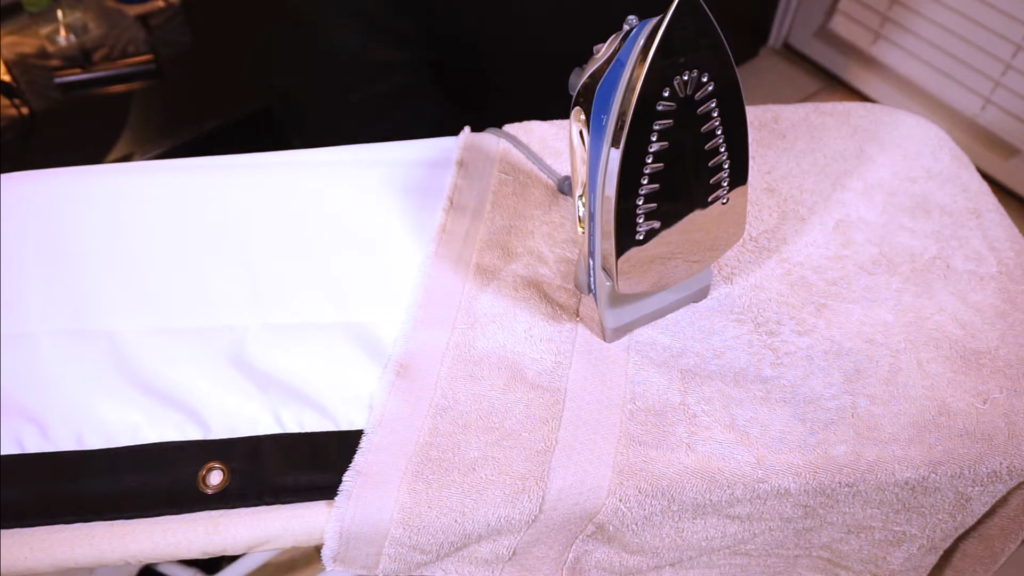
Apply Weight/Pressure to the Bottom of a Hanging Projector
Although you can use a hairdryer or steam to remove wrinkles from your projector screen, the best way to get rid of them is by applying weight or pressure to the bottom of the screen. This will help stretch out the fabric and get rid of any creases.
One way to do this is to hang your projector screen from a ceiling mount or hooks and then place books or other heavy objects on the bottom edge of the screen. Another option is to lay the screen flat on a table or floor and then put something heavy on top of it, like a stack of textbooks.[1]
Use Careful Storage to Prevent Wrinkles in Your Projection Screen
When you’re not using your projection screen, it’s important to store it properly to prevent wrinkles. Be sure to keep it in a cool, dry place out of direct sunlight. If you’re storing the screen for long periods of time, consider rolling it up rather than folding it. This will help prevent permanent creases from forming in the material.[1]
FAQ
Can you put a cloth projector screen in the washing machine?
The short answer is no. You could damage both the screen and the washing machine if you tried to put a cloth projector screen in the washing machine. Even if you put it in a delicate bag, there’s a risk that the screen could get caught on something and tear. Plus, most screens are made of delicate materials that can’t handle being washed in a machine.
Can you put the projector screen in the dryer?
The answer to this question is no, you cannot put the projector screen in the dryer. The heat from the dryer can damage the projection surface of the screen and cause permanent wrinkles.
If you have a fabric projector screen, you can try hanging it up in a steamy bathroom for a few minutes to help loosen any wrinkles. Just make sure that the screen is not touching any surfaces that could potentially leave marks or damage it. You can also use a handheld steamer on fabric screens to remove wrinkles.
How do you clean a home theater projector screen?
When it comes to cleaning your home theater projector screen, there are a few things you’ll want to keep in mind. First, avoid using any cleaning solutions that contain alcohol or ammonia as these can damage the screen material. Instead, opt for a mild soap and water solution or a specialty screen cleaner designed specifically for use on projector screens.
Once you’ve got your cleaner of choice, start by gently wiping down the surface of the screen with a soft cloth. Avoid scrubbing too hard or using anything abrasive as this could also damage the screen. If you’re dealing with stubborn dirt or stains, you may need to pre-treat the area with a bit of diluted cleaner before wiping it down again.
Why is my projector screen sticky?
There are a few reasons why your projector screen may be sticky. It could be due to humidity, dust, or even the type of paint you used to make the screen. If you live in an area with high humidity, it’s important to keep your projector screen clean and dry. Dust can also cause your screen to become sticky. Try using a dust cloth or vacuum cleaner with a soft brush attachment to remove dust from your screen. If you used latex paint to make your projector screen, it may be more likely to become sticky over time. You can try using a different type of paint next time, or you can try treating the sticky area with a solution of one part water and one part vinegar.
How do you clean the lens of a projector?
First, you need to turn off the projector and unplug it from the power source. Next, using a soft, dry cloth, gently wipe the lens in a circular motion. If there are any stubborn spots or stains, you can use a mild cleaning solution applied to the cloth. Be sure to avoid using any harsh chemicals or abrasives on the lens as this could damage it. Once you’ve finished cleaning the lens, you can then proceed to clean the rest of the projector according to its specific instructions.
Projector screens are susceptible to wrinkles due to their large surface area and delicate material. However, there are a few ways that you can remove wrinkles from your screen without damaging it. One way is to simply hang up your screen and allow gravity to do its job. Another way is to use a steamer on your screen, being careful not to overheat it or get it too wet.
How do you clean a glass bead projector screen?
To clean a glass bead projector screen, you will need:
- A mild soap or detergent
- A soft cloth or sponge
- Water
- Optional: vinegar or alcohol (for tougher stains)
Instructions:
Glass bead screens can be cleaned with soap and water. Mix a small amount of mild soap or detergent with water, and then gently wipe down the screen with a soft cloth or sponge. If you have tougher stains, you can try using vinegar or alcohol. Be sure to test a small area first to make sure it doesn’t damage the screen.
What can I use to clean my projector lens?
To clean your projector lens, you will need:
- A soft, dry cloth
- A can of compressed air (optional)
Instructions:
Start by using a soft, dry cloth to dust off the lens. If there are any stubborn spots, you can try using a can of compressed air. Hold the can about six inches away from the lens and spray it for a few seconds. Be sure to point the nozzle away from you so that you don’t get blown back by the force of the air! Once you’re finished cleaning, put your projector back together and enjoy your newly refreshed image.
Useful Video: How NOT to Remove Wrinkles from a Projector Screen- FAIL!
Conclusion
Cleaning your projector screen and lens is important for maintaining a clear image. With a little time and effort, you can keep your projector looking like new. Thanks for reading! We hope this article was helpful. If you have any questions or comments, please feel free to reach out to us. We’re always happy to help.
Have a great day!
References
- https://hometheateracademy.com/get-wrinkles-out-of-a-projection-screen/#
- https://onsme.com/remove-wrinkles-from-projector-screen/
- https://www.silverticketproducts.com/pages/my-screen-material-has-wrinkles-or-waves

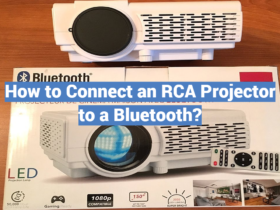
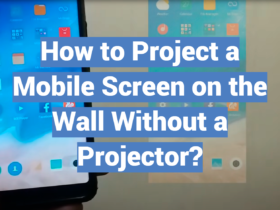


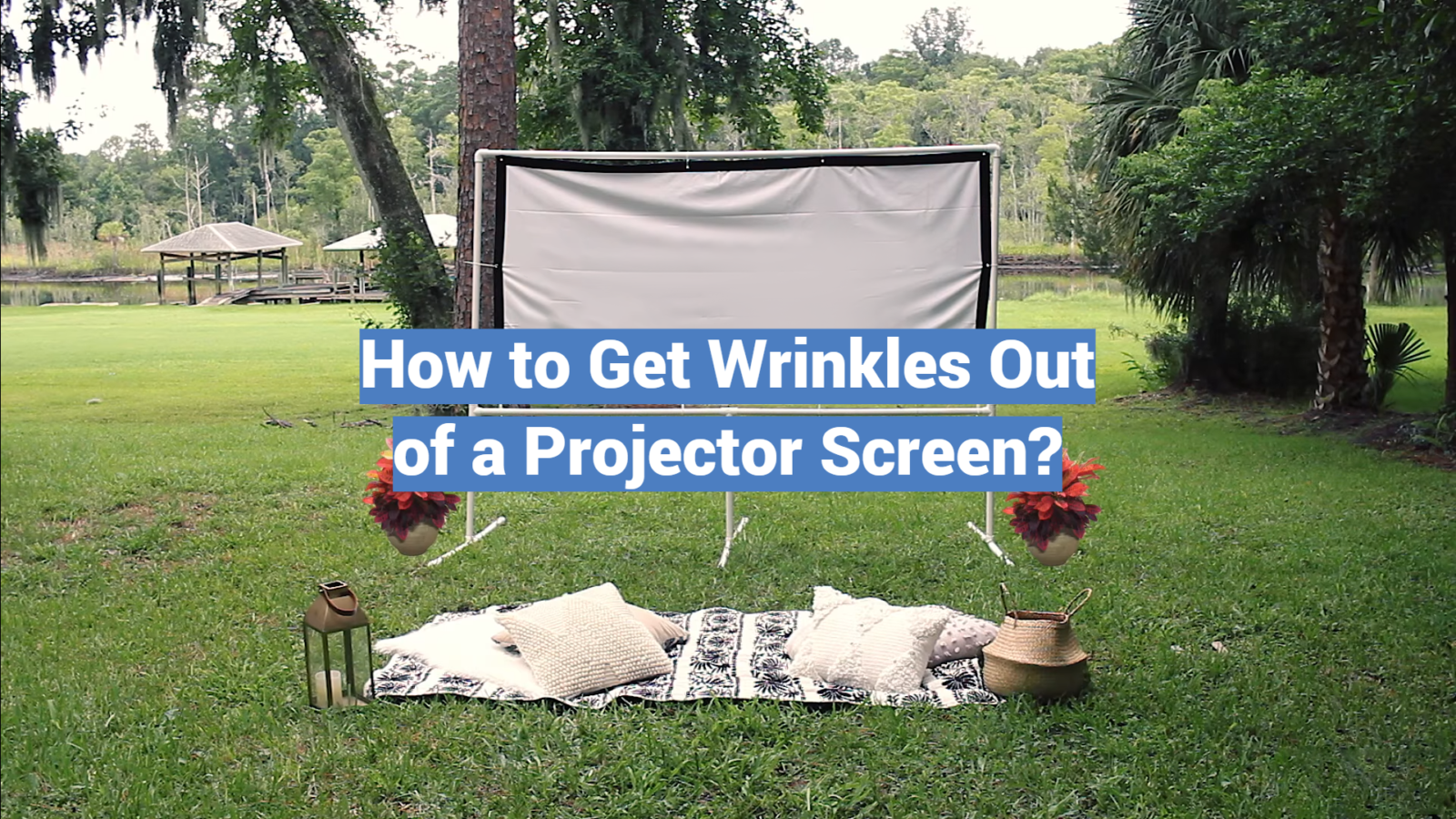
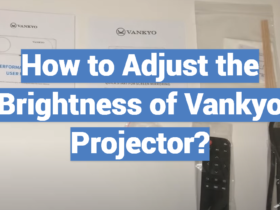

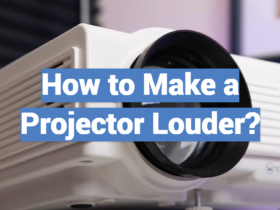

Leave a Review